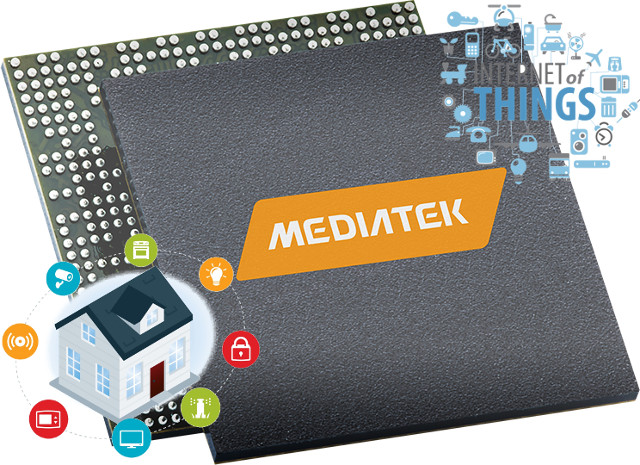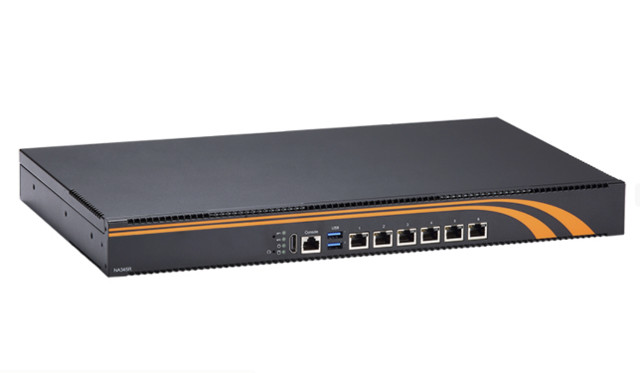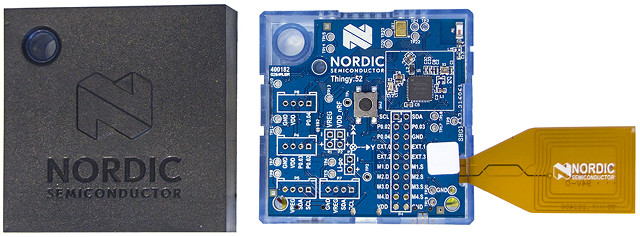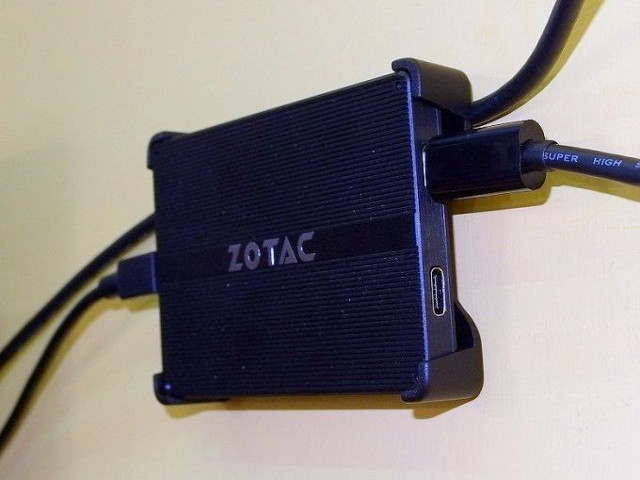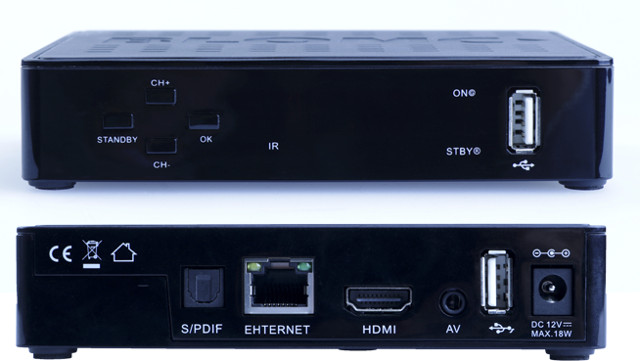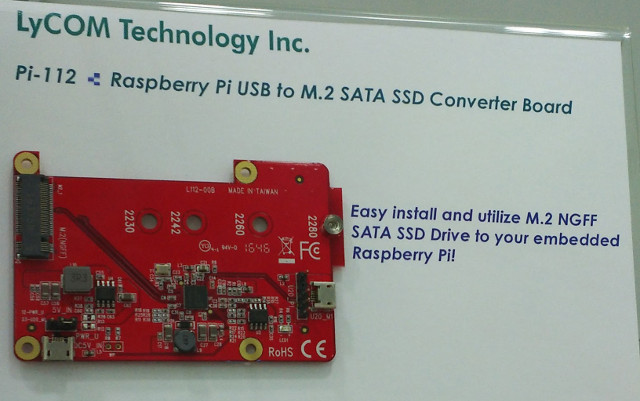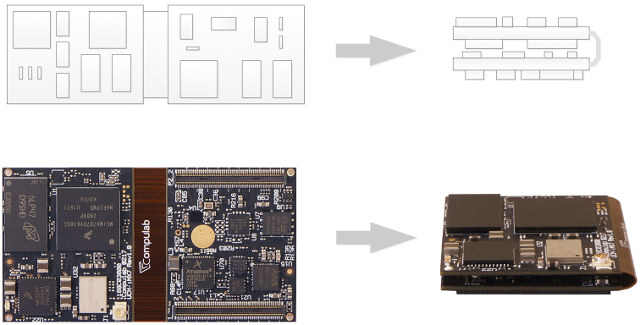Beside announcing MT7622 SoC for WiFi and Bluetooth 5 gateways and routers last week, Mediatek also introduced three “next generation” WiFi SoCs for the IoT and the Smart Home market during Computex 2017, namely MT7686, MT7682, and MT5932. Mediatek MT7686 is a wide temperature range WiFi SoC for appliances: MCU – ARM Cortex-M4F @ 192 MHz System Memory – 4MB + 384KB RAM Storage – 4 MB flash with XIP support Connectivity – Low-power 1T1R 802.11 b/g/n Wi-Fi subsystem Peripherals – SDIO I/F, UART, I2C, SPI, I2S, PWM, and auxiliary ADC Power Supply – Integrated Power Management Unit (PMU) Power Consumption – Connected DTIM1 <0.7mA Temperature Range – “Wide” Package – QFN48 (6x6mm) Mediatek MT7682 is promoted as a cost-effective, integrated SoC for multi-Cloud platforms: MCU – ARM Cortex-M4F @ 192 MHz System Memory – 384KB RAM Storage – 512 KB or 1 MB flash with XIP support Connectivity – […]
Axiomtek NA345R is an Intel Celeron/Atom Apollo Lake Powered 1U Network Appliance with 6 Gigabit LANs
Axiomtek has just introduced an update to its Braswell based NA343R network appliance with NA345R 1U rackmount network appliance powered by either Intel Celeron N3350 or Intel Atom x5-E3940 Apollo Lake processor, and featuring 6 Gigabit Ethernet ports connected through Intel i211 Ethernet controller, and targeting VPN, network bandwidth controller, and firewall applications. Axiomtek NA345R rack server system specifications: SoC (either one) Intel Celeron N3350 dual core processor @ 1.1 GHz / 2.4 GHz (Burst frequency) with 12EU Intel HD Graphics 500 (6W TDP) Intel Atom x5-E3940 quad core processor @ 1.6 / 1.8 GHz with 12EU Intel HD Graphics 500 (9.5W TDP) System Memory – 1x SO-DIMM DDR3L-1866 up to 8GB RAM non-ECC memory Storage – 1x 2.5″ SATA 3.0 HDD, 1x mSATA, one optional 3.5″ SATA HDD, AMI BIOS Video Output – HDMI port, optional VGA port Connectivity – 6x Gigabit Ethernet via Intel i211 Ethernet controller, one […]
Nordic Thingy:52 Bluetooth 5 IoT Sensor Development Kit Targets Mobile & Web App Developers
Some developers may be interested in providing solutions for the Internet of Things, but they may not have the skills or interest in making their own hardware, and/or develop firmware, and just want to create demos or prototypes quickly, focusing on app development instead. Nordic Semiconductors has recently launched Thingy:52 IoT Sensor Kit with Bluetooth 5 & NFC connectivity, and various sensors for those developers. Nordic:52 IoT Sensor development kit (nRF6936) hardware specifications: MCU – Nordic Semi nRF52832 ARM Cortex-M4F Bluetooth 5 System on Chip (SoC) Connectivity – Bluetooth 5 LE and NFC Sensors Temperature,Humidity, Air pressure, Air quality (CO2 and TVOC), color and light intensity 9-axis motion sensing – Tap detection, orientation, step counter, quaternions, euler angles, rotation matrix, gravity vector, compass heading, raw accelerometer, gyroscope, and compass data Audio Speaker for playing prestored samples, tones, or sound streamed over BLE (8-bit 8 kHz LoFi) Microphone streaming (ADPCM compressed […]
Zotac PI225 Ultra Slim Apollo Lake Mini PC is Smaller than a 2.5″ SSD, About as Thick as a Smartphone
We’ve covered a large number of tiny mini PCs and TV sticks powered by Intel processors, but usually they are thicker than your smartphone because of USB, HDMI, and Ethernet ports if the latter is included. Zotac decided to leverage USB type C data and display capabilities to do away with USB & HDMI ports, and used a micro USB port for power in their latest Zotac PI225 mini PC resulting in an ultra thin (8mm) mini PC that is smaller than a 2.5″ SSD. Zotac PI225 mini PC specifications: SoC – Intel Celeron N3350 dual core “Apollo Lake” processor @ 1.1 / 2.4 GHz with 12 EU Intel HD Graphics 500 (6W TDP) System Memory – 4 GB LPDDR3 Storage – 32 GB eMMC flash, micro SDXC slot USB – 2x USB 3.0 type C connectors with data and DisplayPort support Connectivity – 802.11ac WiFi and Bluetooth 4.2 Power […]
BLOMC ONE is a Linux IPTV/OTT Set-Top Box Compatible with Stalker Middleware Portal
Infomir MAG boxes are popular for people running their own IPTV network with content managed using Linux servers to store media files and run Stalker open source IPTV middleware portal developed by the company. A new company has now launched a competing set-top box compatible with Stalker called BLOMC ONE. BLOMC ONE specifications: Processor – Unamed 667 MHz CPU with LQFP144 package System Memory – 2Gbit (256 MB) DDR3 memory Storage – 16 MB flash Video Output – HDMI 1.3 port up to 1080p, AV (CVBS) Transport Stream & Profile Level – MPEG-4, H.264, H.265, MPEG-2 MP@HL,MPEG/AVC Audio – S/PDIF output, HDMI, and AV Audio Decoding – MPEG1 Layer I&II, MPEG4 AAC, and MPEG4 AAC-HE (AAC+), Dolby Digital(AC-3), MP3, WMA Connectivity – Ethernet (RJ45) port USB – 2x USB 2.0 host ports Misc – RS232 connector, IR expansion port Power Supply – 12V/1.5A; standby Power – 0.5 watts max. Dimensions […]
LyCOM shows off a range of Raspberry Pi Hats at Computex 2017
Taiwanese LyCOM, a maker of various I/O accessories showed off a range of Raspberry Pi compatible expansion boards at Computex. Some of them are rather unusual, such as the Pi-112 which adds M.2 drive support. LyCOM also offers modules that adds SATA and mSATA support. Common among all three modules is that they use a USB to SATA bridge chip, although unfortunately I wasn’t able to determine who the manufacturer of the bridge chip was, as all the hats were in a glass display case. All three hats have a micro USB connector that needs to be connected to one of the USB ports on the Raspberry Pi board, but they can also be connected via a pin-header. The M.2 adapter also has a second micro USB port for power and it’s of course only compatible with SATA based M.2 drives. LyCOM was also showing off a full-size SD card […]
XOD is a Visual Programming Language for Arduino, Raspberry Pi, and other Maker Boards
When you think about visual programming on the Raspberry Pi or Arduino board, Scratch may come to mind, but some developers have decided to create their own visual programming language working for Arduino, Raspberry Pi, and other boards. Meet XOD, pronounced ksəud. The developers explains their used “functional reactive programming principles and added graphical functionality”. XOD is comprised of “nodes” that represents either some physical device like a sensor, motor, or relay, or some operation such as addition, comparison, or text concatenation, which you can link together through inputs and outputs to create a program, and XOD IDE will compile the resulting diagram to create and upload a binary program to Arduino, Raspberry Pi, etc… You can also convert a XOD diagram into a node with inputs and outputs to use it in another diagram, so the language is scalable. The developers are now looking for testers to play with […]
Compulab’s Miniature “Bend & Fold” UCM-iMX7 System-on-Module Could Fit into a Watch
Many companies are still releasing NXP – soon to be Qualcomm – i.MX 6/7 system-on-modules, but I don’t cover all of them, since we have already many to choose from. But Compulab’s latest UCM-iMX7 SoM differentiates itself by it size, using the company’s “Ultra-compact Multilevel Module” (UCMM) technology, to pack NXP i.MX7 processor, 2GB RAM, 64 GB eMMC flash, and a wireless module into a 30 x 27 x 8 mm volume that could potentially fit into something as small as a watch. The picture above clearly shows how UCMM technology works with the module comprised of two rigid PCBs and one flexible layer routing signals between the two allowing to bend and fold the rigid parts together to form a vertical stack. The principle could be extended to more PCBs and flexible layers, sof for example you could have four PCBs with three flexible layers in future / custom […]


